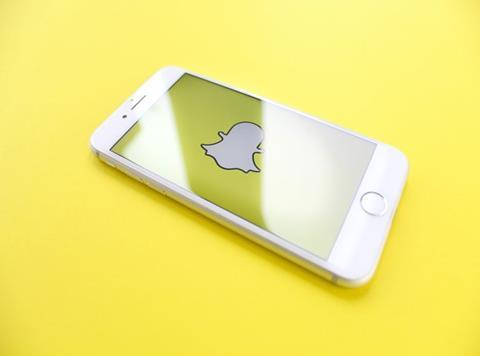
Snapchat isn’t the easiest platform to get your head around. But in a social media landscape where the core demographic of most platforms is getting steadily older, Snapchat remains very relevant to the notoriously hard-to-reach teen audience. In fact, 45% of teens stated that Snapchat is their preferred social media platform, up from 39% a year ago. So, it’s certainly worth considering for the many fmcg brands that want to connect with young people.
For marketers looking to take their first step into Snapchat, or those struggling to make their work on the platform meaningful, there are a few key considerations worth bearing in mind.
Snapchat is a pioneer of audience creativity and as such, brands on the platform need to remember that people don’t just come to passively view content, they come to express themselves. Use the tools that Snapchat has to your advantage - bespoke lenses and filters are more than just an opportunity to slap your logo onto user-generated content, they’re a chance to really get people stuck into your brand and its personality.
Social media power list: grocery’s biggest influencers
McDonald’s ‘Snaplication’ activation is a great example of creative thinking on Snapchat – the fast food giant created a filter that allowed people to record a job application video of themselves wearing a McDonald’s uniform. Or take Bacardi, which used Snapchat’s AR technology to create immersive lenses that allowed users to star in their own Major Lazer music video. It generated an impressive 29 years of viewing time in just one day and huge exposure for the alcohol brand.
Snapchat might not be the obvious choice of platform to generate direct sales, but its Snapcodes – which are effectively QR codes within Snapchat – can be used to push products. We worked with Fanta to place Snapcodes on exclusive Halloween branded packs as part of a wider Snapchat-led campaign. The codes unlocked new lenses and filters and desire for these drove transactions, helping Fanta significantly increase its sales year-on-year. Evian has also turned to Snapcodes to unlock exclusive content, and Wendy’s used them for a charity campaign by donating money every time a customer scanned a code on one of their drink cups.
As Snapchat looks to compete with the likes of Facebook and Instagram for advertising investment, it’s becoming more sophisticated in what it can offer brands. This year it has really ramped up its targeting options and analytics; advertisers now target based on location type (e.g. a cinema) and use radius targeting around specific geographic locations, as well as offering footfall reports to those with bricks and mortar stores. Make sure your investment in the platform goes as far as it can by keeping up to date with new developments like these.
But despite this, Snapchat won’t be the right platform for every brand. It’s not particularly intuitive. It’s not always obvious where you should be seeking out content. It is, by nature, frivolous and spontaneous. This might not align with your brand’s values and if it’s an uncomfortable fit, don’t force it. However, if you want to connect with a young audience and hand over some creative control, it’s a platform I’d definitely recommend.
Sarah Cantillon, Managing Partner, Movement


















No comments yet